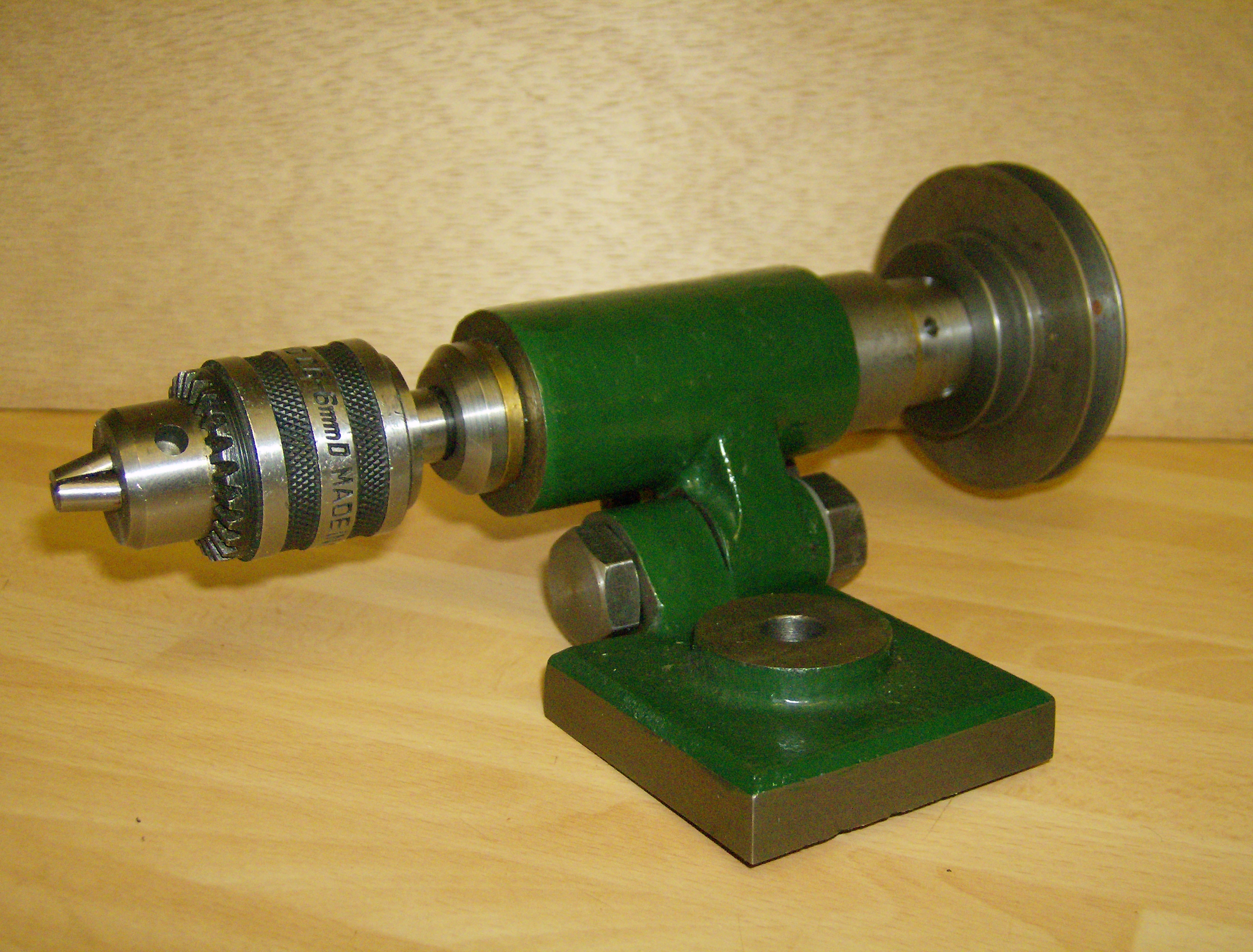If you model historic machines they will almost always have plain bearings. Plain bearings can also be the best solution for other purposes having performances equal to ball races whenever adequate lubrication is provided.
Although you will often read references to bearing 'brasses', the most common metals used for plain bearings are actually bronzes. Brasses are alloys largely of copper and zinc, and though they will serve as bearing materials for lightly loaded models the bronzes (which are alloys of copper with tin and other elements) are generally much harder wearing.
A Potts Milling Spindle with plain bronze bearings
Let's look at two bronzes which meet most of the needs of hobbyists. They both have a similar dark, reddish colour and often bear a dark spiral pattern and feel very heavy.
PB1
Most hobbyists will instinctively turn to 'phosphor bronze' - usually supplied as PB1 a very tough, hard and hard-wearing material that is ideal for heavily loaded bearings.
The downside of PB1 is that it is not a particularly pleasant metal to machine. It can produce tough, raggedy swarf but the worst problem is that it tends to 'close up' when drilled. This nasty habit can cause drills or reamers to jam and even break giving phosphor bronze a reputation for difficultly in machining.Some people even go as far as grinding drills with off-centre tips so they drill over-size to avoid these problems.
Rather than spoiling your best drills, is there an easily available alternative?
SAE 660 Bronze
Fortunately there is! SAE 660 is a bronze with a high lead content that both makes it a lot easier to machine and also helps it bearing properties. You can pretty much treat it like a free-cutting mild steel. It's not as good for extreme load bearing or very high speeds as PB1 but for 9 out of 10 (or more) hobby applications you are better off using SAE 660.
The good news is that SAE 660 is often rather cheaper than PB1, sometimes around 3/4 of the price, and is readily available from most metal stockholders.
As well as being available as drawn or continuously cast bars they are both available in tube form. This doesn't just save you some machining work, work the reduced weight of buying tube can save you a significant amount when buying what is one of the more expensive metals. Fortunately, we often find we only need a short end of material for bearing use and many specialist hobby suppliers will sell very short lengths.
'Oilite' Bushes
It's worth mentioning 'Oilite' bushes, and other similar bushes. These are made from sintered bronze and impregnated with oil to provide plain bearings that need minimal maintenance. Usually these should be bought in the size you need and may well prove to be a cost effective alternative to making your own bearings..
Bear in mind that the housing size should be carefully made to the right size for the bearing as if it is too tight the bearing will close up. You may often read that such bushes should never be machined, in practice they can be finish machined but a very sharp tool should be used to avoid 'closing up' the micro-pores in the material.
See also:
